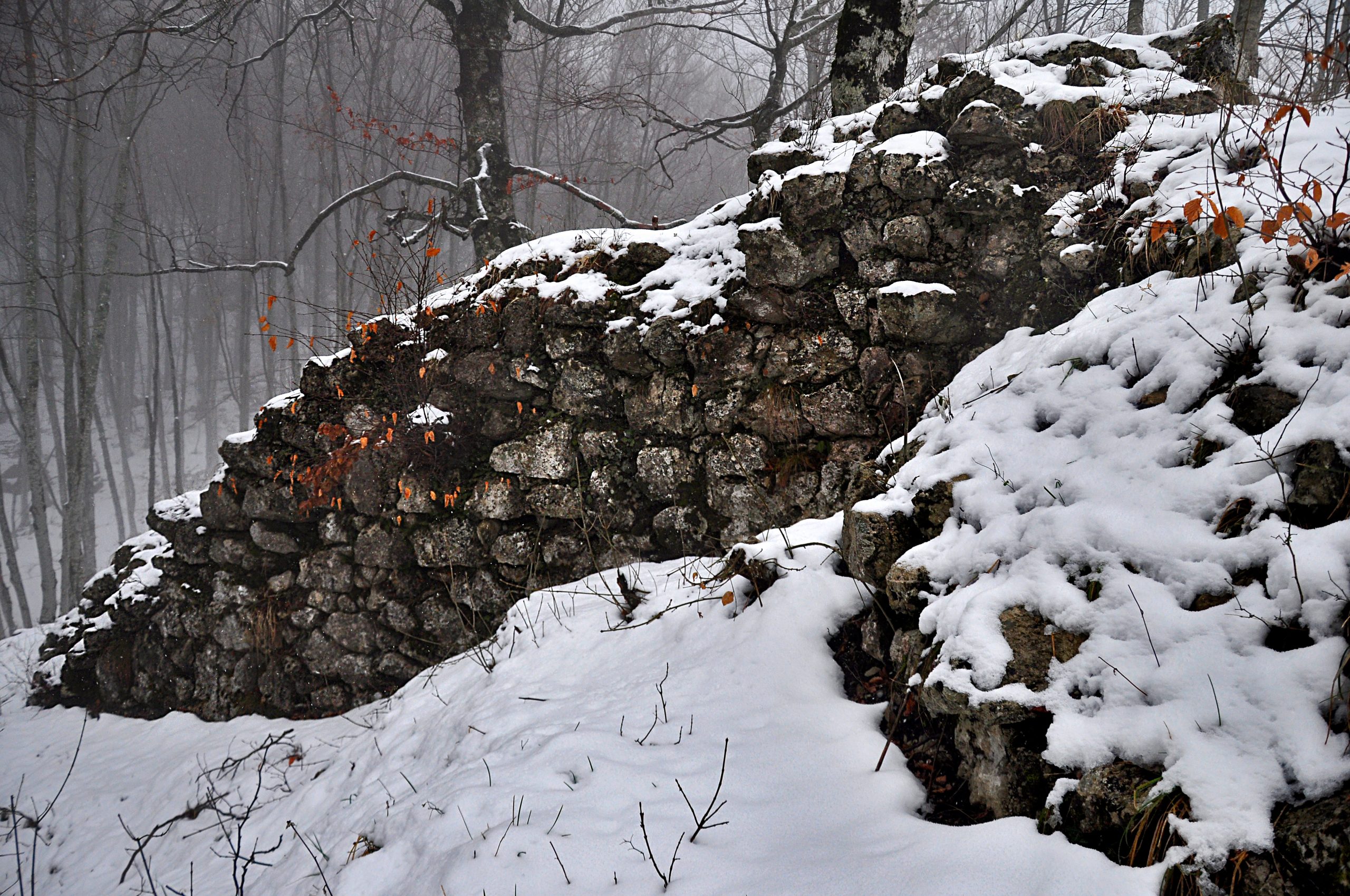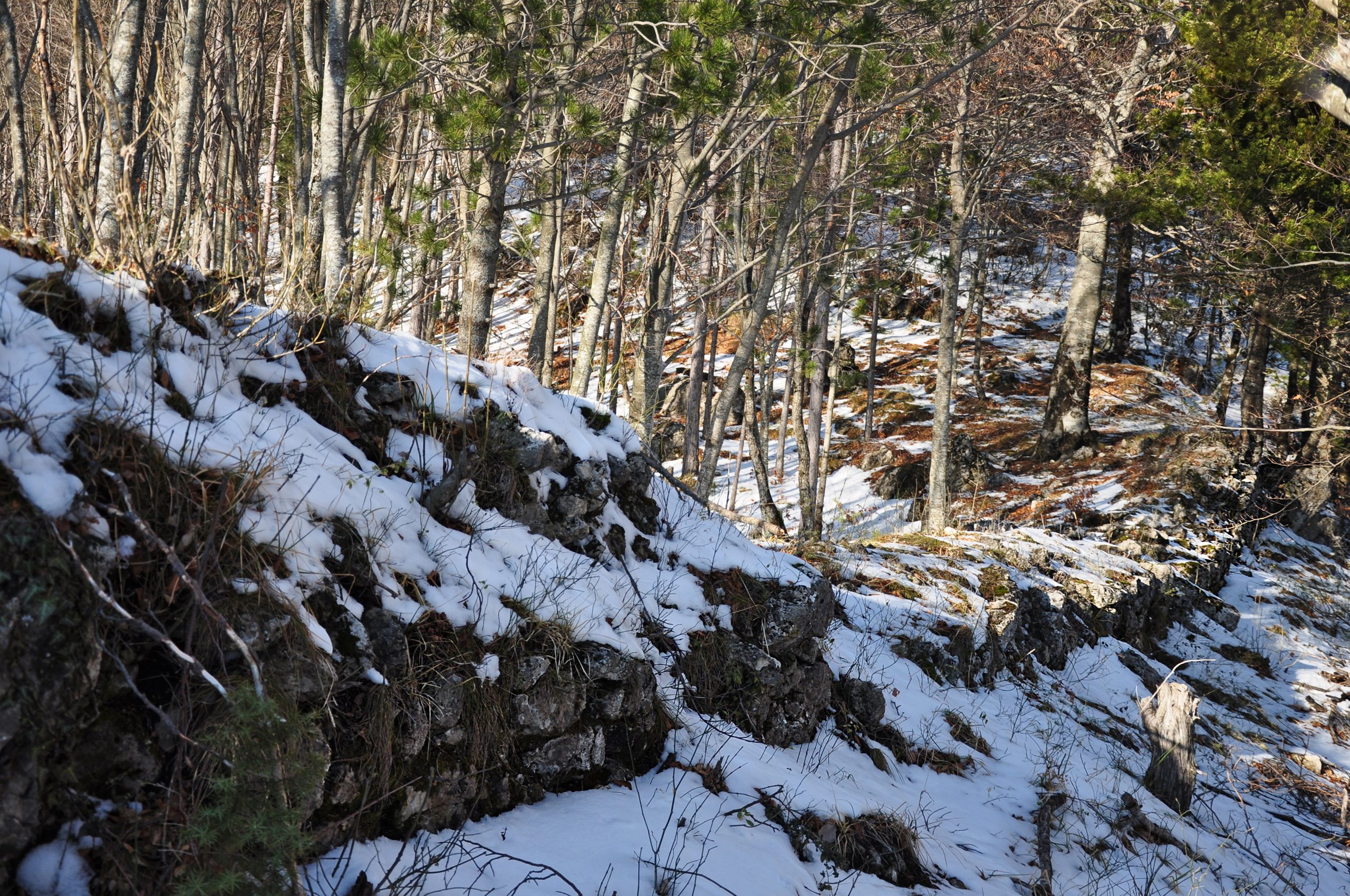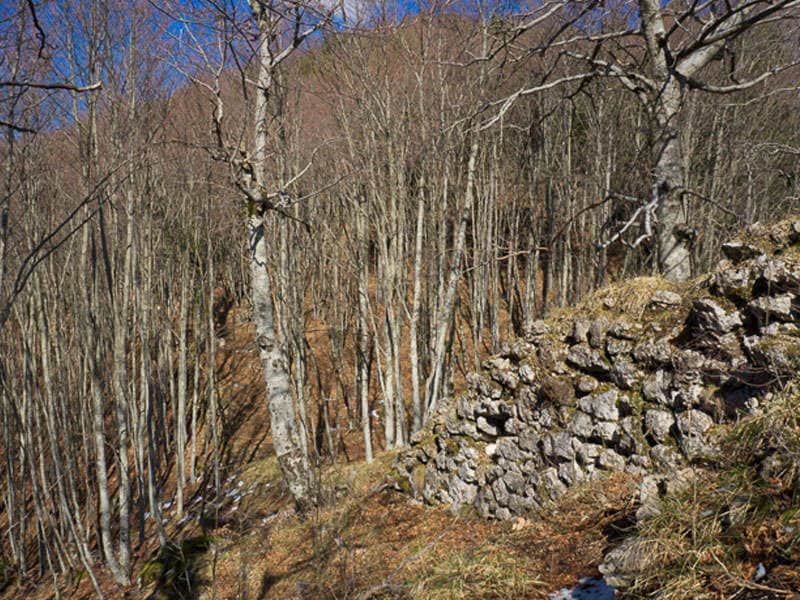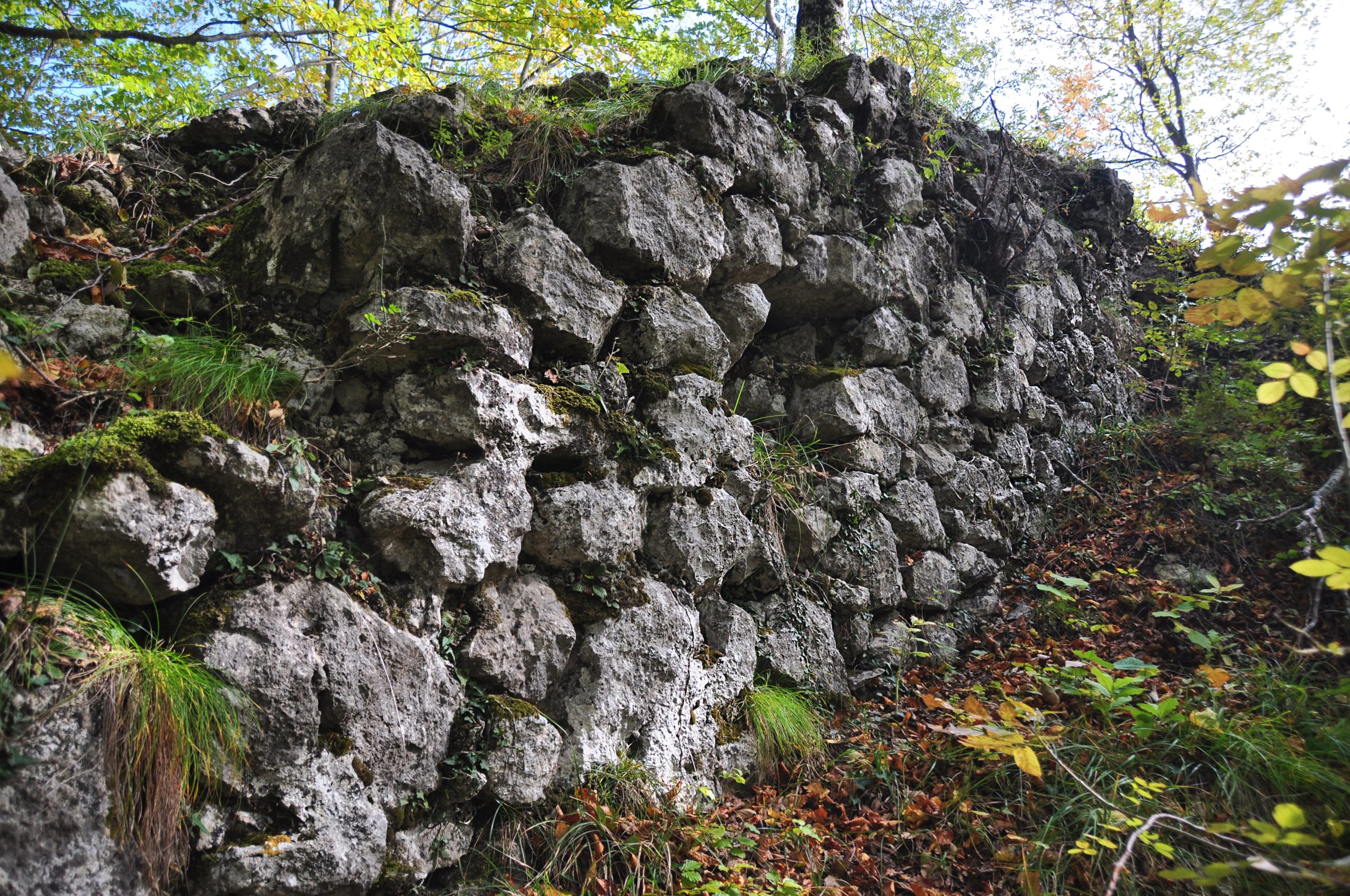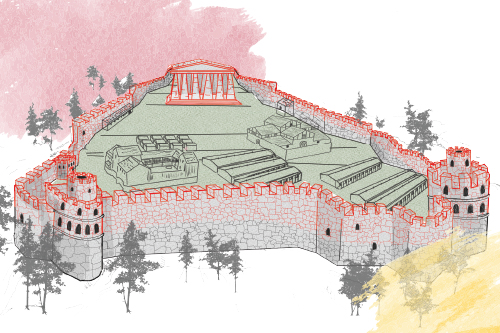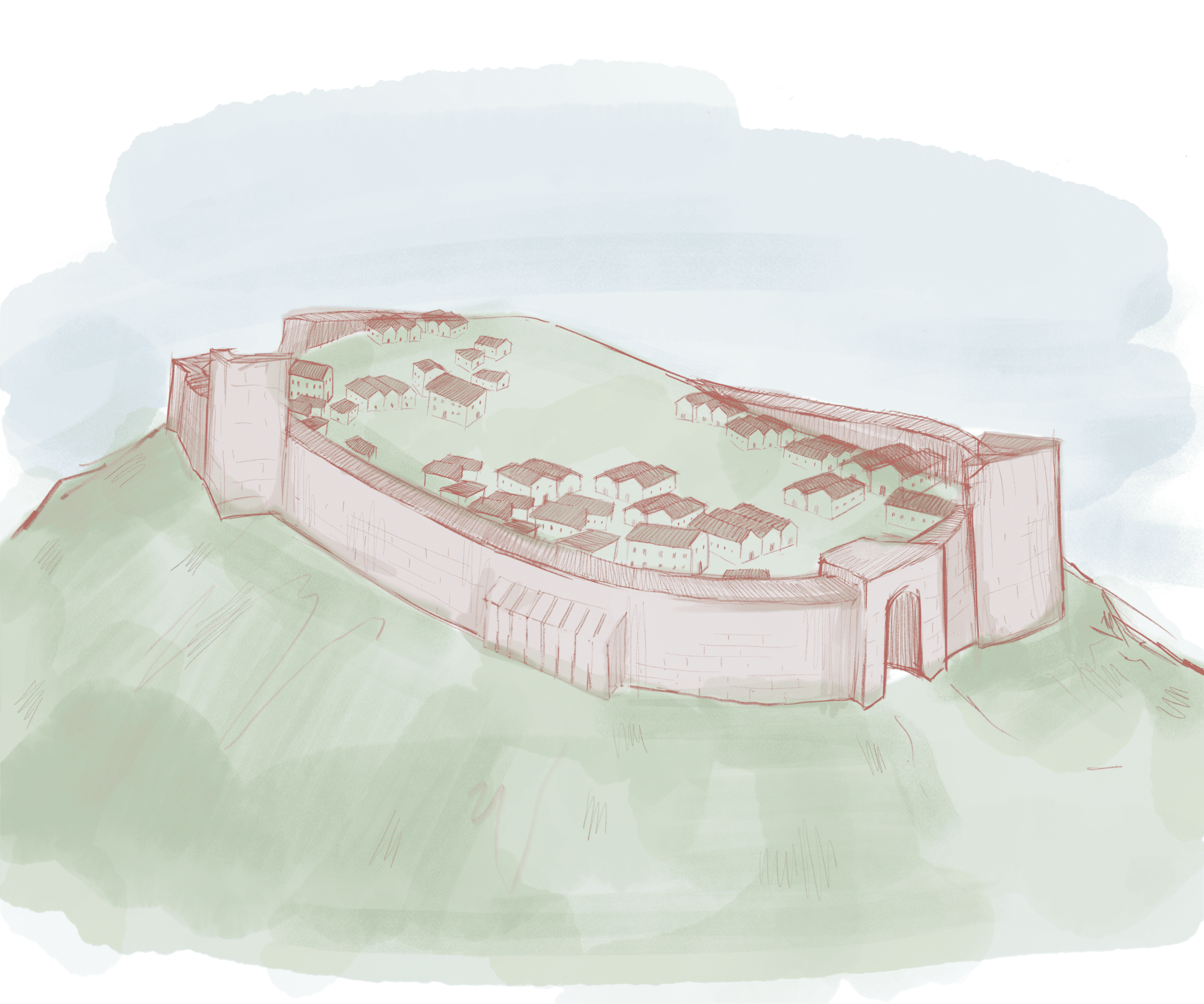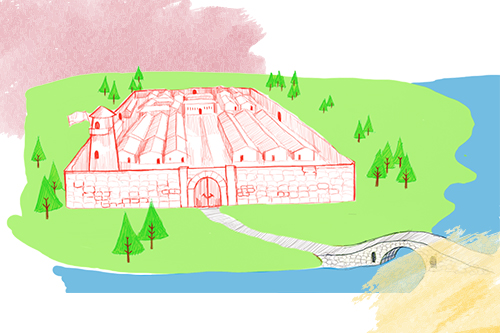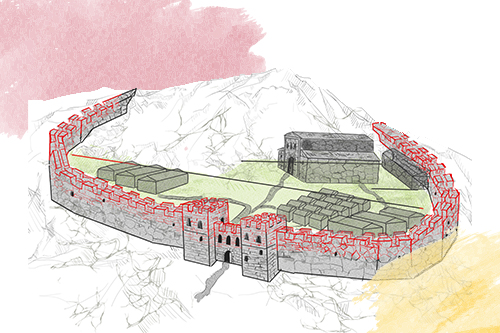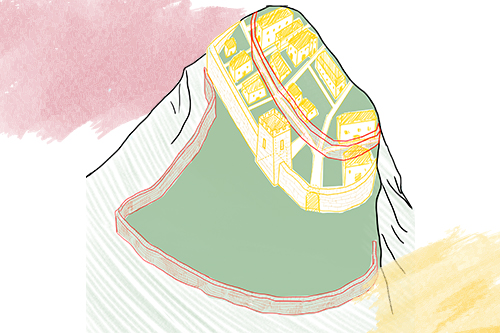🏰 Explore This Castle
Castle Details
Dajti Castle, or the Dajti settlement, is the most important Late Antiquity monument in the Tirana region, as it is the largest and best-preserved among them (4th–6th century AD). The morphology of the mountain slope (terrain) determined the shape of the castle itself: triangular, pyramid-like, with a surrounding fortification wall about 550 meters long, covering an area of 1.3 hectares.
Due to the mostly steep terrain, the builders used terraced walls, on top of which dwellings were constructed, ranging from 5 to 15 meters in width. The fortification system includes two towers — one circular and one semi-circular — as well as a small acropolis located at the summit. The only entrance discovered so far is 1.5 meters wide and is located near the semi-circular tower. The wall thickness varies between 1.6 and 2.7 meters.
For the construction of the walls, medium-sized stones bonded with lime and sand mortar were used. In various parts of the castle, walls up to 2 meters in height are still preserved. Inside and around the outer area of the castle, numerous fragments of roof tiles have been found.
Learn About This Castle
👑 Who?
Roman Emperor Justinian I rebuilt Dajti Castle.
👑
🏰 What?
The most important monument of Late Antiquity in the Tirana region because it is the best preserved.
🏰
❓ Why?
The purpose of its construction was to protect the two mountain passes on the sides of Mount Dajti. The large number of houses, local pottery, and metalwork found indicate that it was part of an even earlier settlement.

🗺️ Where?
On the western slope of the mountain, southeast of the Dajti plain.
🗺️
📅 When?
Dajti Castle was built during the transition period between ancient history and the early Middle Ages, in the 4th–6th centuries AD.

Castle Gallery
